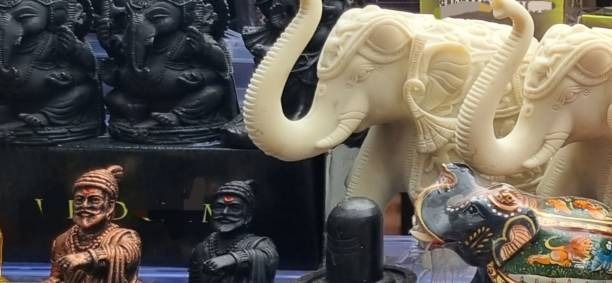When it comes to maintaining your lawnmower, understanding its components is crucial. One of the most important, yet often overlooked, parts is the mower belt. This seemingly simple component plays a pivotal role in the operation of both push mowers and riding mowers.
Choosing the correct type and maintaining it properly can mean the difference between smooth, efficient mowing and frustrating breakdowns. In this article, we’ll explore the different types of mower belts, their differences, and tips for prolonging their lifespan.
Mower belts come in various types, each designed to serve specific functions. The most common are deck belts, drive belts, and V-belts. Deck belts are typically located within the mower deck and are responsible for spinning the blades that cut the grass. They are engineered to handle high-speed rotation and the occasional jolt from hitting sticks or stones, ensuring your cutting remains consistent and precise.
Drive belts, on the other hand, are part of the mower’s propulsion system. They connect the engine to the wheels or transmission, transferring power so the mower can move forward or backward. Without a properly functioning drive belt, even a powerful engine can leave you pushing your mower manually across the lawn.
Finally, V-belts are a specialized type of belt that can serve both deck and drive purposes, depending on the mower model. Their distinctive V-shaped cross-section allows them to fit securely into pulley grooves, providing excellent grip and reducing slippage. These belts are often preferred in larger riding mowers because they can handle greater torque and extended use.
When selecting a replacement, it’s essential to understand these distinctions. Each belt type has its unique role in keeping your mower operating smoothly, and using the wrong belt in the wrong place can lead to decreased performance or even damage. Midway through this discussion, it’s also worth noting that proper maintenance and storage of mower belts can significantly extend their service life.
Not all belts are created equal. Deck belts, drive belts, and V-belts differ not just in design but also in the materials used. Most mower belts are made from reinforced rubber compounds. These materials are chosen for their flexibility, strength, and resistance to heat and wear. V-belts, for example, often contain embedded fibers, such as polyester or Kevlar, which provide extra durability and prevent stretching over time.
Another key difference lies in thickness and width. Deck belts are generally narrower and thinner since they primarily transmit power over a short distance to the blades. Drive belts are broader and stronger to handle the torque required to propel the mower forward. Additionally, some belts feature specialized coatings or ribbed designs to improve grip on pulleys and reduce slippage.
Environmental factors also play a role in belt longevity. Exposure to direct sunlight, moisture, or chemicals such as gasoline can accelerate the degradation of rubber compounds. Knowing the material composition of your mower belt can help you take preventive measures to protect it, such as storing your mower in a shaded, dry area or wiping off any fuel spills immediately.
Choosing the right belt depends heavily on your mower type and usage. Push mowers, for example, may not have a drive belt at all; they typically only use a deck belt to spin the blades. Riding mowers, however, often use a combination of deck belts and drive belts, and some even incorporate multiple V-belts for enhanced performance and reliability.
Always refer to your mower’s user manual or manufacturer specifications when selecting a replacement belt. Matching the correct size, type, and material ensures optimal performance and prevents premature wear. Using a belt that is too tight or too loose can cause slippage, increased wear on pulleys, and potential engine strain.
It’s also worth noting that certain specialty mowers—such as zero-turn mowers or commercial-grade riding mowers—may require belts with unique features, like double reinforcement or high-heat resistance. Understanding the specific requirements of your mower model is key to avoiding unnecessary downtime or costly repairs.
Even the best mower belts will wear over time, but several practices can significantly extend their lifespan:
Regular inspection: Periodically check belts for cracks, fraying, or glazing. Catching wear early can prevent sudden failures.
Proper tension: Ensure belts are neither too loose nor too tight. Most mowers have a recommended tension range specified in the manual.
Clean pulleys: Debris, grass, and dirt can accumulate on pulleys, accelerating belt wear. Regular cleaning prevents uneven wear and slippage.
Avoid harsh conditions: Try not to mow wet, sandy, or rocky terrain, as these conditions can stress the belt and pulley system.
Proper storage: Store your mower in a dry, shaded area to protect belts from UV rays, moisture, and temperature extremes.
Replace proactively: Even if a belt appears to be in good condition, replacing it after a few seasons or a set number of hours of operation is often more cost-effective than dealing with a sudden breakdown.
By selecting the right belt and practicing proactive care, you can enjoy smooth mowing seasons without frequent interruptions. A well-maintained belt ensures not only consistent cutting but also reduces strain on your mower’s engine and other components.
Understanding the different types of mower belts, their materials, and proper usage is a crucial aspect of mower maintenance. By selecting the right belt and following simple maintenance tips, you can extend your mower’s lifespan and achieve a consistently healthy, well-manicured lawn. Taking care of something as seemingly minor as a belt can have a surprisingly significant impact on your overall mowing experience.




Want to add a comment?